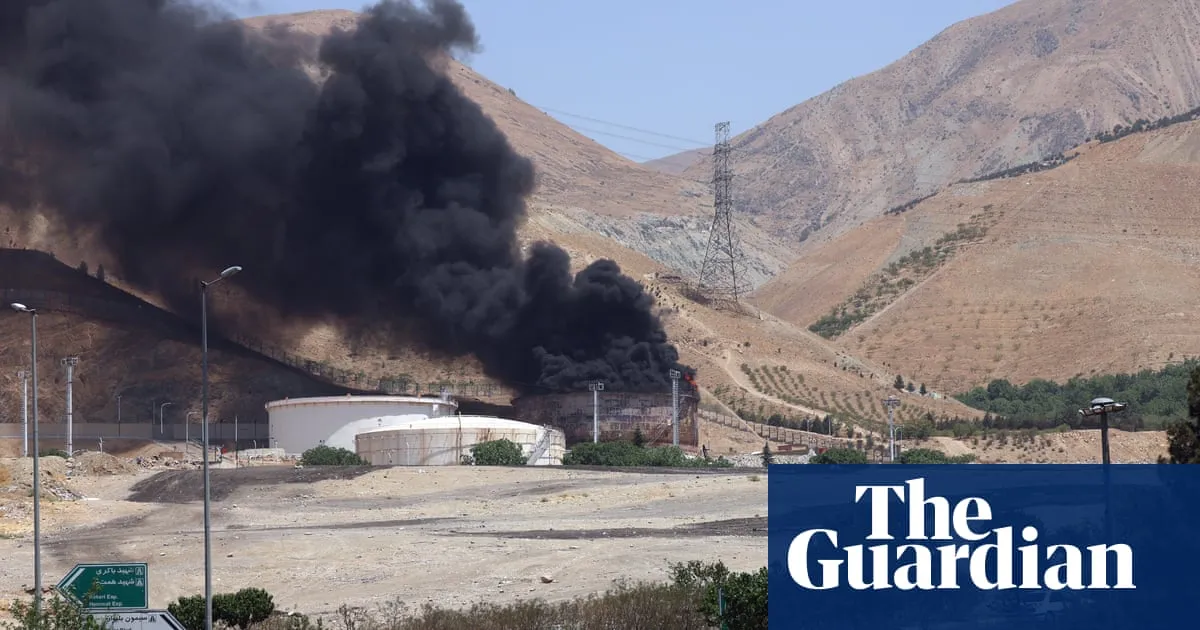
The ongoing conflict between Israel and Iran intensified dramatically on Friday, following a series of predawn airstrikes launched by Israel. These strikes targeted over 100 locations, including vital nuclear facilities and missile sites, leading to the deaths of high-ranking military commanders and scientists. This initial assault has triggered a series of retaliatory exchanges, raising alarms over the possibility of a more extensive and perilous regional war. Since the hostilities began, both countries have witnessed deadly strikes in residential areas, resulting in significant civilian casualties.
As of Monday, the Iranian health ministry reported that the death toll had risen to 224, with 1,277 injured. Conversely, Israeli authorities confirmed that 23 civilians had been killed and nearly 60 injured during this escalation. The rising number of casualties highlights the urgent need for a resolution to this ongoing conflict.
Israel's military operations have prominently included strikes on key nuclear facilities in Iran. Among the most critical targets were the uranium enrichment sites at Natanz and Fordow, as well as a uranium conversion facility located at Isfahan. Recent video footage shared online revealed the aftermath of an explosion at Natanz, which is regarded as Iran's most significant nuclear enrichment site. Satellite images indicated damage to the electrical substation responsible for powering the facility, along with visible destruction at the above-ground pilot fuel enrichment plant, which houses hundreds of centrifuges. However, the International Atomic Energy Agency (IAEA) stated that there was “no indication of a physical attack” on any underground sections of the site.
Furthermore, the IAEA reported that four buildings at Isfahan had sustained damage, but no harm was noted at Fordow, which is constructed deep beneath a mountain, providing it with substantial protection.
In addition to nuclear facilities, Israel asserts that it has successfully destroyed 120 Iranian surface-to-surface missile launchers, which accounts for approximately one-third of Iran's total missile stockpile. Israeli military sources declared that they have achieved “total air superiority” in the skies over Tehran. The strikes have also targeted missile development and production sites, although Israel has a history of exaggerating its military success, making these claims difficult to independently verify.
Reports have confirmed strikes at military bases in Bid Kaneh, Kermanshah, and Parchin, as well as at airports in Mashhad, Mehrabad, and Tabriz, where missile complexes were also struck.
Israeli forces have further targeted key energy facilities, including gas processing plants at South Pars, recognized as the world's largest natural gas field. Strikes were also reported on storage tanks in Rey, located south of Tehran, and a fuel depot in Shahran, north of the capital. Footage from Sunday depicted massive fireballs emanating from these sites, highlighting the severity of the attacks.
Since the onset of hostilities, Israel has bombarded the Iranian capital, targeting around 80 sites in Tehran alone on Saturday night. This included strikes on the Iranian Ministry of Defense and various residential buildings, which reportedly housed military commanders. The attacks led to the significant loss of life among Iran's top military echelons.
Security camera footage captured the intensity of the explosions during the initial wave of attacks on Friday, showing tall buildings engulfed in flames and residents fleeing into the streets.
In retaliation, Iranian missiles have struck several Israeli locations, including major cities such as Tel Aviv, Bat Yam, Haifa, Rehovot, Bnei Brak, Petah Tikva, and Tamra. Annotated satellite images reveal damage to buildings near Israel's defense headquarters in Tel Aviv. Drone footage captured the aftermath of a missile strike in Bat Yam during the early hours of Sunday morning.
Additionally, CCTV and drone footage documented the moment an Iranian missile hit a residential complex in Petah Tikva, east of Tel Aviv, on Monday, along with the devastation that followed. However, Israeli reporting restrictions have complicated the assessment of damage to strategic locations, leading to speculation that Israel may downplay the effectiveness of Iranian missile attacks.
This ongoing conflict between Israel and Iran underscores the fragility of regional stability and emphasizes the urgent need for diplomatic interventions to prevent further escalation and protect civilian lives.